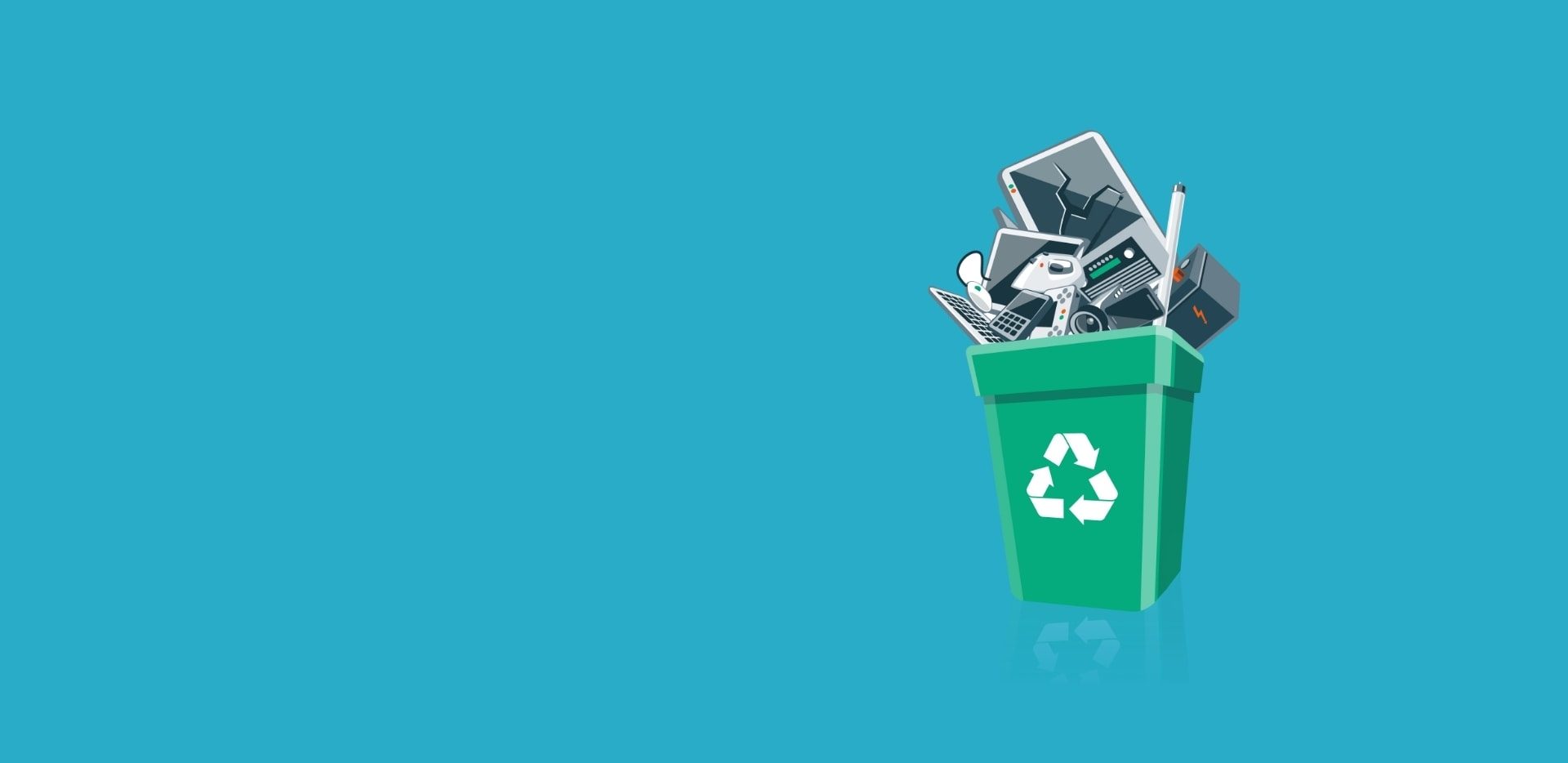
E-waste Management
Albertsons E-waste program
At Albertsons, we believe that it is our responsibility to ensure that we do business in such a manner that it enriches our environment and planet. That’s why we make sure that we deliver innovative and eco-friendly products to our consumers. We are committed to product stewardship through the life cycle of our electronics, and ensure compliance with E-waste rules in India.
About E-waste
E-waste has been defined as “waste electrical and electronic equipment, whole/in part or rejects from their manufacturing and repair process, which are intended to be discarded.” In other words, E-waste or Waste Electrical and Electronic Equipment is the term used to describe old, end-of-life or discarded appliances using electricity. With the increase in usage and dependence on electrical and electronic gadgets such as washing machines, refrigerators, air conditioners etc. there has been increase in E-waste generation in large quantities. A UN report estimates that the worldwide generation of E-waste is around 30 to 50 Million tonnes per annum. E-waste generally consists of those substances which are hazardous for environment and can seriously affect the health of the human beings.
Benefits of recycling of old electronic products/why recycle?
1. Saves Natural Resources:
There is a need to encourage recycling of all useful and valuable material from E-waste so as to conserve the ever depleting natural resources. Recycling end-of-life products is vital if we are to save resources and minimize waste.
2. Reduces Environmental Pollution:
Scientific disposal of E-waste reduces the environment pollution. Moreover, making products from recycled materials creates less air and water pollution than making products from virgin materials.
3. Alternate Resource:
With virgin resources facing rapid depletion, E-waste can be a good alternate resource since it contains many valuable and recoverable materials such as aluminium, copper, gold, silver and ferrous materials.
Negative consequences of disposal of product in an unscientific manner
1. Health Risks:
E-waste-connected health risks may result from direct contact with harmful materials such as lead, cadmium, chromium, brominated flame retardants or polychlorinated biphenyls (PCBs), from inhalation of toxic fumes, as well as from accumulation of chemicals in soil, water and food.
2. Children are Vulnerable
Children require more specific protection from E-waste exposure. As they are still growing, their air, water and food intake is more as compared to adults- and with that the risk of hazardous chemical absorption. Moreover, it may cause an irreversible damage to their central nervous system, immune system, reproductive and digestive system.
3. Environmental Degradation:
Oil and gases which are present in E-waste such as compressor and CRT causes environmental pollution. Burning of rubber and plastic in open area causes air pollution.
Accidental breakage/damage of electronics & E-waste
Accidental breakage and damage of electronics and E-waste can pose a threat to the environment. As long as the toxic components in electronics are enclosed within the original manufacturer’s designed outer-shell of the gadget, they don’t pose much of a danger as they have been engineered to contain any such effects. However, accidental breakage or damage of such electronics or E-waste can lead to toxic elements leaking and contaminating their immediate environment. Damage to the environment due to accidental breakage of E-waste is a major concern in informal E-waste disposal and recycling facilities, so consumers need to ensure that they dispose their E-waste only at authorized E-waste recycler.
Brief about E-waste (Management) Rules 2016
Guidelines for customers on the disposal of end-of-life products
How to drop off products at our collection point?
Here are the steps you need to follow when dropping off your electronics item at our Collection Point:
1. Pack the electronics item in light packaging, so that the device is secured inside safely.
2. Identify the Collection Point in your state through customer care.
3. Take the packaged product to the Collection point.
4. At the Collection Point, you will be provided with a form. Please fill in the necessary details.
5. Now submit the product package along with the filled up form at the Collection Point. This way, the appliance recycling organised by Greeniva Recycler will be done under best possible conditions, in compliance with E-waste Management and Handling Rules on Waste Electrical and Electronic Equipment. We thank you for fulfilling your responsibility towards environment.
Greeniva Recycler – As part of this partnership with Greeniva Recycler, the Company will ensure environmentally sound management of electronics that have reached their end of life phase. Greeniva Recycler has obtained all the necessary authorizations from the appropriate governmental agencies for their processing facilities. Greeniva Recycler ensures proper recycling and disposal of e-waste. This helps us protect the environment from any hazardous consequences, which would be otherwise caused by the inappropriate waste management of e-waste.
Do’s and Don’ts for customers
Do’s
1. Always look for information on the catalogue with your product for end-of-life equipment handling.
2. Always call Local Greeniva Recycler to dispose products that have reached end-of life
3. Always drop your used electronic products, batteries or any accessories when they reach the end of their life at your nearest Greeniva Recycler Call Centre
4. Wherever possible or as instructed, separate the packaging material according to responsible waste disposal options and sorting for recycling.
5. Always disconnect the battery from product, and ensure any glass surface is protected against breakage.
Dont’s
1. Do not dismantle your electronic products on your own.
2. Do not throw electronics in bins having “Do Not Dispose” sign.
3. Do not give E-waste to informal and unorganized sectors like Local Scrap Dealer/ Rag Pickers.
4. Do not dispose your product in garbage bins along with municipal waste that ultimately reaches landfills.
Toll Free No: 1800-102-4919
Email:
